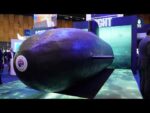U.S.-based advanced manufacturing firm Velo3D has expanded its partnership with Innovative Rocket Technologies Inc. (iRocket), aiming to reinforce the domestic aerospace and defense industrial base through scalable metal additive manufacturing. The collaboration focuses on producing complex propulsion components for reusable launch vehicles using Velo3D’s Sapphire printers—critical for both commercial space access and national security missions.
Strategic Context: Reinforcing the Defense Industrial Base
The Velo3D-iRocket partnership comes at a time when the Pentagon is actively seeking to diversify and harden its supply chains across key defense sectors—including hypersonics, space launch systems, and advanced propulsion technologies. The 2022 National Defense Strategy (NDS) emphasized the need for resilient manufacturing ecosystems capable of rapid prototyping and serial production of next-generation systems.
Reusable launch vehicles are increasingly viewed as dual-use assets. While primarily developed for commercial satellite deployment or cargo delivery to low Earth orbit (LEO), these platforms also support rapid-response space missions such as tactical ISR satellite launches or hypersonic intercept testing. By leveraging additive manufacturing (AM), companies like iRocket can iterate designs faster while reducing lead times for critical engine components.
Partnership Scope: Scaling Additive Propulsion Components
iRocket is currently developing its Shockwave family of fully reusable small launch vehicles designed to deliver payloads up to 300 kg into LEO. Central to this effort is the production of high-performance rocket engines with complex internal geometries—components that are difficult or impossible to manufacture using traditional subtractive techniques.
To meet this challenge, iRocket has integrated Velo3D’s Sapphire XC printers into its production line at its Long Beach facility in California. These large-format laser powder bed fusion (LPBF) machines enable the printing of monolithic thrust chambers with regenerative cooling channels directly embedded into the structure—a key feature in modern rocket engine design that enhances thermal management while reducing weight.
The Sapphire XC system offers a build volume of 600 mm diameter by 550 mm height and supports materials such as Inconel 718—a nickel-based superalloy commonly used in high-temperature aerospace applications due to its superior strength-to-weight ratio and corrosion resistance.
Technical Advantages of Velo3D’s Metal AM Platform
Unlike conventional LPBF systems that require extensive support structures during printing—often limiting design freedom—Velo3D’s proprietary Flow software suite allows engineers to print overhangs below 10° without supports. This enables true design-for-AM workflows where complex internal geometries like cooling channels or turbopump housings can be printed in a single build cycle with minimal post-processing.
- Support-free printing: Enables optimized fluid flow paths within combustion chambers.
- In-situ quality assurance: The Assure software provides layer-by-layer validation data during builds.
- Repeatability across machines: Digital calibration ensures consistent part quality across multiple Sapphire units deployed at different sites.
This digital-first approach aligns with DoD initiatives around Model-Based Systems Engineering (MBSE) and digital thread integration across acquisition programs—especially relevant as AM adoption grows in classified propulsion programs under DARPA or AFRL oversight.
Aerospace Applications Beyond Launch Vehicles
The implications of this collaboration extend beyond smallsat launches. As DARPA’s Gambit program and AFRL’s Mayhem initiative explore hypersonic air-breathing platforms requiring high-temperature propulsion components, metal AM becomes increasingly vital for rapid iteration cycles under tight thermal constraints.
Additive manufacturing also plays a growing role in sustainment operations for legacy missile systems such as the AGM-86 ALCM or Minuteman III ICBMs—where OEM tooling may be obsolete but digital reengineering via AM can extend service life cost-effectively. By scaling industrial capacity now through commercial partnerships like Velo3D-iRocket, the U.S. defense sector hedges against future bottlenecks in propulsion-critical domains.
Outlook: Building a Digitally Native Supply Chain
The expanded relationship between Velo3D and iRocket reflects a broader shift toward digitally native supply chains where design data drives distributed production closer to point-of-use—whether on military depots or forward-operating bases equipped with deployable AM units.
This model aligns with recent DoD investments under the Defense Production Act Title III authorities aimed at accelerating domestic capacity in strategic materials processing—including titanium powders, superalloys, and high-performance ceramics—all essential inputs for metal AM platforms operating at aerospace-grade tolerances.
If successful, partnerships like these could serve as templates for future public-private collaborations aimed at fielding next-generation munitions, hypersonic glide bodies, or even orbital logistics platforms via agile industrial ecosystems rooted in additive-first engineering philosophies.










